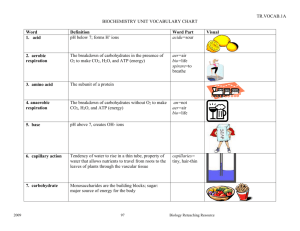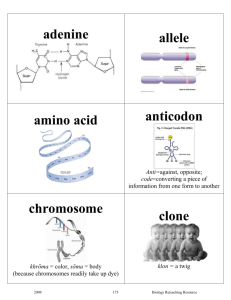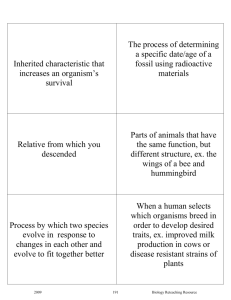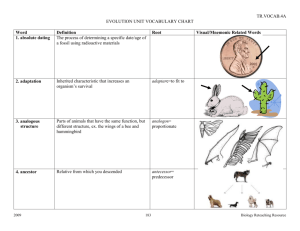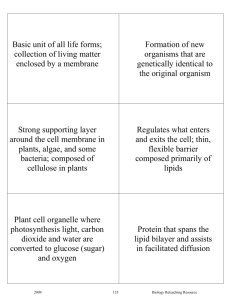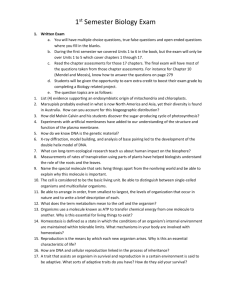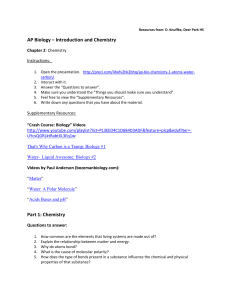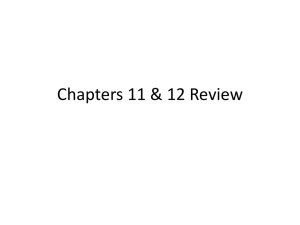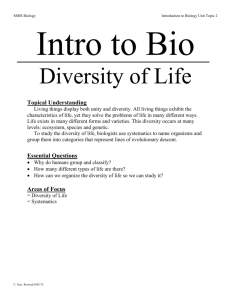acid
advertisement
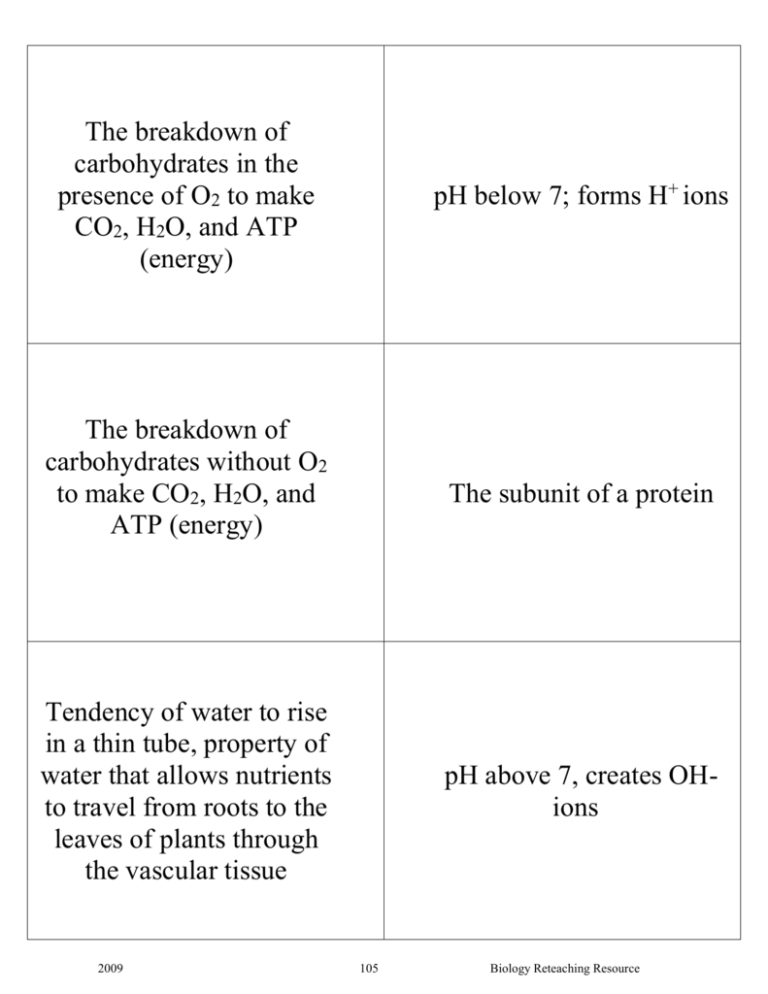
The breakdown of carbohydrates in the presence of O2 to make CO2, H2O, and ATP (energy) pH below 7; forms H+ ions The breakdown of carbohydrates without O2 to make CO2, H2O, and ATP (energy) The subunit of a protein Tendency of water to rise in a thin tube, property of water that allows nutrients to travel from roots to the leaves of plants through the vascular tissue 2009 pH above 7, creates OHions 105 Biology Reteaching Resource The process by which carbohydrate molecules are broken down to release ATP (energy) C6H12O6 + O2 CO2 + H20 + ATP (Energy) Monosaccharides are the building blocks; sugar: major source of energy for the body A substance composed of atoms of two or more elements linked by chemical bonds Attraction between molecules of the same type; Ex. surface tension, which causes liquids to form spherical droplets, is caused by cohesion. Subunit of a lipid A protein that acts as a catalyst and speeds up biochemical reactions 2009 106 Biology Reteaching Resource Inorganic compound that the body needs in small amounts, one not made from living things and does not contain carbon Stores energy; includes fats, oils, waxes; nonpolar not soluble in water Subunit of a carbohydrate, ex=glucose Group of atoms that form the smallest unit of a substance that can retain its chemical properties A subunit of nucleic acids (DNA and RNA); consists of a sugar, phosphate and N base; in DNA they form a series of units called genes Stores genetic information; composed of nucleotides; ex= DNA and RNA 2009 107 Biology Reteaching Resource Term used to describe the acidity of a solution Chemical substance that organisms require to live A molecule that has a partial negative charge on one side and a partial positive charge on the other; hydrophilic Process by which autotrophs take in sunlight, H2O, and CO2 to make glucose (C6H12O6) and oxygen Mixture composed of solute and solvent Polypeptide; needed for growth, structure, and enzymes; composed of amino acids 2009 108 Biology Reteaching Resource Organic molecule that the body needs to regulate body processes The substance in which a solute is dissolved to form a solution; water is the universal solvent Energy storage molecule; created during cellular respiration H2O; polar molecule that expands upon freezing making it less dense as a solid than as a liquid (so ice floats) A molecule that contains chains of carbon; examples: carbohydrates, lipids, proteins, vitamins A molecule that does not contain chains of carbon; ex=water and minerals 2009 109 Biology Reteaching Resource Occurs in the absence of light; organisms produce their own food using inorganic substances Substance that speeds up the rate of a chemical reaction Process by which organisms maintain relatively stable internal conditions Transmission of genetic material from parent to offspring The sum of building and breaking reactions happening in living things A bond between polar molecules, especially water 2009 110 Biology Reteaching Resource The substance dissolved into the solvent to make a solution The creation of new cells/organisms from existing ones (sexual or asexual) Vitamin that assists with wound healing Reactant of an enzyme catalyzed reaction; the molecule that gets broken down or built Vitamin that assists with blood clotting Vitamin that assists with bone growth 2009 111 Biology Reteaching Resource 2009 112 Biology Reteaching Resource
